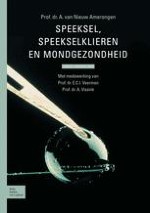Samenvatting
Moleculairbiologische technieken zoals de recombinant-DNA-techniek en genklonering worden steeds vaker routinematig gebruikt, voor onder andere productie van humane eiwitten zoals insuline en groeihormoon, en voor de ontwikkeling van veilige vaccins. Synthese van glycoproteïnen met deze methode is echter nog altijd een groot probleem. Voor de synthese van kleine (niet-geglycosyleerde) eiwitten en peptiden is organisch-chemische synthese een goed alternatief. In principe kan met deze techniek elk gewenst eiwitdomein in relatief grote hoeveelheden worden gesynthetiseerd. Organisch-chemisch synthese van peptiden is een belangrijk hulpmiddel bij onderzoek naar de structuur-functierelatie van eiwitten. Daarnaast biedt deze techniek de mogelijkheid tot grootschalige synthese van peptiden voor biomedische toepassingen.
De nieuwe ontwikkelingen op het gebied van de celbiologie (onder andere weefselregeneratie, stamcelonderzoek, gentransfer en micro-arraytechniek) zijn veelbelovend. Hierdoor kunnen toepassingen op onder andere het terrein van weefselherstel en de vroege diagnostiek van maligniteiten op korte termijn worden verwacht.
